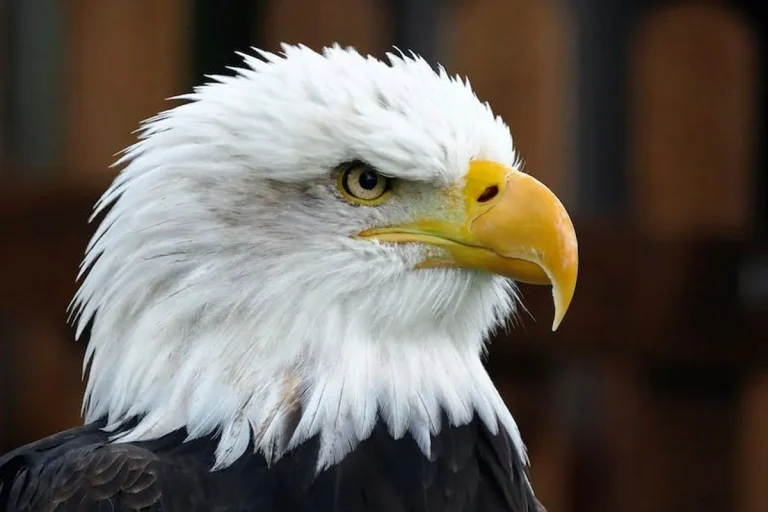Yak Spiritual Meanings and Symbolism

The yak is a tough, long-haired animal that lives in the Himalayas, where it plays a big role in the lives of mountain communities. These strong creatures provide food, transportation, and even companionship to the people who rely on them.
Beyond their practical uses, yaks are deeply respected in Himalayan spiritual traditions. Many believe these animals have a special link to the divine and the natural world, sometimes even representing sacred beings.
Yaks also stand for strength, endurance, and adaptability because they survive in harsh, high-altitude conditions. Their presence reminds people of the power of nature and the importance of living in balance with the environment.

Key Takeaways
- In Tibetan Buddhist traditions, the yak is revered as a sacred animal symbolizing strength, resilience, and a connection between the earthly and divine realms.
- The yak’s sturdy frame, curved horns, and steady gait represent qualities like fortitude, patience, and the ability to thrive in harsh environments.
- Yaks are seen as messengers between the physical and spiritual worlds, offering guidance and inspiration to confront life’s challenges with unwavering spirit.
- The yak’s integral role in Himalayan communities, providing essential resources, reflects its symbolic significance as a conduit between humans and the natural world.
What Does It Mean When You See a Yak?
Spotting a yak in the Himalayas can hold deep spiritual meaning for local communities. These animals are often seen as sacred messengers, carrying signs from the divine or the natural world.
The yak’s strong, steady presence symbolizes resilience and determination, especially in tough situations. Its upward-curving horns are sometimes viewed as a connection between earth and sky, blending the physical and spiritual worlds.
If a yak appears, it might be a sign to stay strong, face challenges, and find balance in life. Many see it as a reminder to keep going, no matter how difficult things seem.
Yak Symbolism
In spiritual traditions, the yak carries many powerful meanings that inspire those who honor it. Its solid, sturdy body represents the ability to handle life’s struggles, while its horns symbolize a link between humans and the divine.
The yak’s slow, steady walk teaches the value of patience and persistence, qualities admired in many cultures. Its thick fur stands for protection and care, and its survival in tough climates shows adaptability and toughness.
Yaks also provide food, milk, and materials, making them a life-giving force in Himalayan culture. In Buddhism, they are linked to selflessness and rebirth, serving as a guide for those on a spiritual journey.
7 Spiritual Meanings of Yak
1. Strength and Endurance
The yak is known for its strong body and powerful presence. But more than its looks, it carries a deep spiritual meaning tied to strength and endurance.
This animal lives in one of the toughest places on Earth—the Himalayas. With cold winds, heavy snow, and thin air, many creatures can’t survive there. But the yak doesn’t just survive—it thrives.
Its ability to live in such rough conditions shows how important it is to keep going, even when life gets hard. The yak keeps climbing, step by step, no matter how steep or icy the mountain is.
When you think about the yak, it reminds you that you can handle your struggles too. You have strength inside you, and like the yak, you can move forward with steady determination.
2. Connection to Nature
The yak isn’t just strong—it’s deeply connected to nature. It lives close to the earth and moves in harmony with the land around it.
Its home is the wild, cold mountains of Asia, where it fits perfectly into the natural balance. It doesn’t fight nature—it works with it.
People who live in those areas see the yak as a sacred animal. It gives them milk, warmth, and help with travel. This shows a strong relationship between humans, animals, and the earth.
Thinking about the yak can remind you that you are also part of nature. Respecting the land and the creatures on it helps you feel more balanced and at peace.
3. Abundance and Prosperity
In many mountain cultures, the yak stands for wealth and plenty. People rely on it for almost everything they need to live.
The yak provides food, warmth, and help with carrying loads. Because of this, it has become a symbol of abundance, especially in places where life can be hard.
In spiritual traditions, the yak is often honored during prayers or ceremonies. It represents a land that gives and supports its people.
By thinking of the yak, people believe they can attract more blessings, health, and happiness into their lives. It teaches the value of sharing and helping others thrive.
4. Wisdom and Intuition
The yak also carries a deeper message about wisdom and inner knowing. Its calm and careful nature is seen as a symbol of spiritual intelligence.
It knows how to move through hard landscapes without rushing. That’s why people believe the yak represents patience and trust in your own instincts.
Its long, curved horns pointing upward are thought to connect the earth with higher knowledge. They remind people to look both inward and upward when searching for answers.
Watching a yak move slowly but surely helps you remember to take your time. There is wisdom in waiting, listening, and following your inner voice.
5. Grounding and Stability
The yak’s wide body and steady walk show what it means to be grounded and stable. It doesn’t wobble or panic, even on narrow mountain paths.
This grounded energy teaches an important life lesson: build a strong foundation. When you feel balanced, it’s easier to deal with stress or problems.
The yak keeps going, no matter the weather or the slope. Its strong body helps it stand firm when others might slip.
Spiritually, this shows how valuable it is to stay centered. Even when things around you are wild or uncertain, you can stay calm and solid inside.
6. Adaptability and Resilience
Besides being grounded, the yak is also incredibly flexible and resilient. It adjusts to new conditions without giving up.
Its thick coat keeps it warm, while its large hooves help it walk on snow. Every part of its body is made to handle change and challenge.
This makes the yak a powerful symbol for coping with life’s ups and downs. It doesn’t avoid hard times—it grows stronger through them.
By learning from the yak, you can find ways to bend without breaking. Life may throw surprises, but you can adjust and keep moving forward.
7. Spiritual Guidance
The yak’s life in the high mountains makes it feel close to the spiritual world. Its strong, calm presence is often seen as a kind of guide.
It reminds you that strength isn’t always loud or fast. Sometimes, the greatest power comes from quiet patience and deep inner focus.
People see the yak as a teacher of spiritual balance. Its life teaches you to move with care, respect nature, and honor your connection to something bigger.
By following the yak’s example, you can develop a spiritual path that is strong, calm, and steady. This kind of path helps you stay true to yourself, no matter what’s going on around you.
Yak Symbolism in Different Cultures and Contexts
Yak symbolism is deeply rooted in cultures worldwide, representing strength, resilience, and spiritual connection. These majestic animals hold special meaning in Native American, Celtic, Nordic, African, and Eastern traditions. Each culture interprets the yak’s significance in unique ways, reflecting their beliefs and way of life
Native American Culture
In Native American traditions, the yak is more than just a strong animal—it’s a sacred symbol of endurance and unity. Many tribes see it as a bridge between the physical and spiritual worlds, with its thick fur and curved horns holding deep meaning.
Shamans often seek guidance from the yak, believing it carries wisdom from the divine. Its milk, meat, and hide are used in rituals, showing how deeply it’s woven into daily life. As a provider, the yak is honored for its role in survival and community well-being.
Celtic Culture
For the Celts, the yak represents strength, endurance, and a link to nature. Its ability to thrive in harsh conditions mirrors the Celtic spirit of perseverance. The yak is also tied to sacred mountains, acting as a connection between earth and the divine.
The yak’s horns symbolize balance—between masculine and feminine, or material and spiritual. In Celtic rituals, its image is used to call for protection, prosperity, and wisdom. This deep respect highlights the yak’s lasting cultural importance.
Nordic Culture
In Nordic traditions, the yak stands for resilience and survival in extreme climates. Its thick coat and powerful build reflect the toughness needed to endure long winters. The yak is often linked to Thor, the god of thunder, symbolizing unshakable strength.
The yak’s horns are also connected to the sacred stag, a creature of myth and magic. This ties the yak to Norse cosmology, elevating it beyond a simple beast of burden to a creature of spiritual significance.
African Culture
In parts of Africa, the yak is a symbol of adaptability and survival in tough environments. Nomadic tribes value its ability to thrive in deserts and highlands, seeing it as a model of self-sufficiency. It’s also a vital resource, providing milk, meat, and materials.
Some African cultures believe the yak helps connect people to the spirit world. Its presence in rituals is thought to bring blessings and ancestral guidance. This mix of practical and spiritual roles makes the yak deeply respected.
Eastern Culture
In Tibetan Buddhism, the yak is a sacred symbol of strength and devotion. Its image appears in religious art, representing steadfastness on the spiritual path. The Himalayas rely on yaks for transport, food, and even trade, making them essential to daily life.
Hindu traditions associate the yak with Lord Shiva, linking its power and ruggedness to the deity’s energy. The yak’s horns resemble Shiva’s crescent moon, reinforcing this connection. Across Eastern cultures, the yak is both a practical helper and a spiritual guide.
Arts and Literature
Yaks appear in Tibetan paintings, Mongolian poetry, and Nepali folklore, often symbolizing nature’s beauty and human resilience. In Tibetan thangka art, they’re shown alongside deities, while Mongolian writers praise their role in nomadic life.
These artistic depictions highlight the yak’s cultural importance. Whether in textiles, carvings, or stories, the yak stands as a timeless emblem of harmony between people and their environment.
Mythology
In myths, the yak is a guardian and messenger. Tibetan Buddhists see it as a symbol of enlightenment, while Bon traditions believe it carries prayers to the gods. Himalayan folklore credits yaks with guiding travelers safely through mountains.
These stories show how the yak bridges the human and divine. Its strength and loyalty make it a powerful figure in legends, reminding people of their connection to nature and the sacred.
Biblical Meanings of Yak
The yak isn’t talked about much in the Bible, but there are a couple of verses that give us clues about what it could represent. Proverbs 27:3 says, “A stone is heavy and sand a burden, but a fool’s provocation is heavier than both.” Some scholars connect this to the image of a strong, burden-bearing animal, like a yak.
This image shows us that the yak could stand for strength, endurance, and the ability to carry heavy emotional or physical loads. These qualities are important in both daily life and in faith, especially when someone is going through hard times. People often feel weighed down, and this verse reminds them that strength is needed to handle it.
In Job 39:9, it says, “Will the wild ox consent to serve you? Will it stay by your manger at night?” The wild ox here is often seen as a symbol of a powerful but untamed animal, which some compare to the yak. This verse highlights the yak’s independent nature, suggesting that strength without surrender can make life harder.
When looking at these verses together, the yak seems to represent both inner power and the challenge of spiritual surrender. It’s not about being forced into control, but about choosing to give yourself over to something greater.
Even though the Bible doesn’t talk much about yaks directly, these scriptures show that animals with strong bodies and wild hearts were noticed and respected. The yak stands for persistence, spiritual struggle, and the quiet strength to carry on.
Spiritual Meaning of Dream About Yak
When a yak shows up in your dream, it’s not random. The yak often points to your ability to handle pressure and keep going, even when things get tough. Its thick fur and strong legs help it survive in the mountains—this may reflect how you handle challenges in your life.
A dream like this could be your mind’s way of telling you that you’re stronger than you think. Even when the path is steep, you have what it takes to move forward. Your spirit may be calling on your patience, strength, or focus to deal with what’s in front of you.
There’s also a strong link between the yak and nature’s rhythm. Yaks live in harmony with their environment, and dreaming of one could mean your soul is seeking that kind of balance too. You may need more connection to the earth or to slow down and notice the world around you.
Sometimes, a yak in a dream means your inner energy needs direction. The dream may ask you to look inward and recognize your own resilience and quiet wisdom. Even if you feel like giving up, this dream might be encouraging you to stand firm.
Dreams about yaks don’t usually shout their messages. But they do remind you of the deep strength you carry—the kind that doesn’t need to be loud to be powerful.
Yak Spirit Animal, Totem, and Power Animal
When the yak is your spirit animal, it brings you calm and quiet strength. It doesn’t rush or panic. Instead, it reminds you that sometimes the best thing you can do is stay grounded and keep going step by step, no matter how long the journey feels.
The yak also encourages steady progress and patience. If you’re someone who often faces struggles, the yak spirit helps you stand strong without being shaken. It teaches that being strong doesn’t always mean fighting—it can also mean staying rooted.
As a totem animal, the yak reminds you of the value of community and support. In the wild, yaks live in herds and rely on each other for warmth and safety. Spiritually, this means you may find your strength by working with others or leaning on those who care about you.
This totem also brings signs of abundance and spiritual richness. It can remind you that even in cold or hard seasons, there is still a source of warmth and plenty inside and around you. You may be asked to look for blessings in places you often overlook.
As a power animal, the yak helps you turn dreams into reality. Its message is about slow but strong action, staying focused, and not giving up when the path feels long. If you’ve been waiting to start something meaningful, this energy might be guiding you to take the first bold step.
Final Thoughts
The yak holds a deep and powerful message across spiritual traditions. Even though it doesn’t have a big place in the Bible, the few references we do have connect it to strength, endurance, and untamed spirit.
In dreams and symbols, the yak brings up images of spiritual balance, grounded energy, and quiet determination. It teaches that being strong doesn’t always mean being loud or fast—it can also mean being patient and firm.
Whether as a spirit guide or dream symbol, the yak points to a path where you rely on your inner strength and trust in life’s process. It reminds you that you can face even the hardest conditions when you stay true to your roots.
This creature helps you see that the real power doesn’t come from rushing ahead—it comes from steady movement, faith, and the courage to keep going, no matter what.
You Might Also Like
1) Wildebeest Spiritual Meanings and Symbolism
2) The Spiritual Meanings of Giraffe and Its Symbolism
3) Antelope Spiritual Meanings and Symbolism
4) Tylosaurus Spiritual Meanings and Symbolism
5) Wallaby Spiritual Meanings and Symbolism





